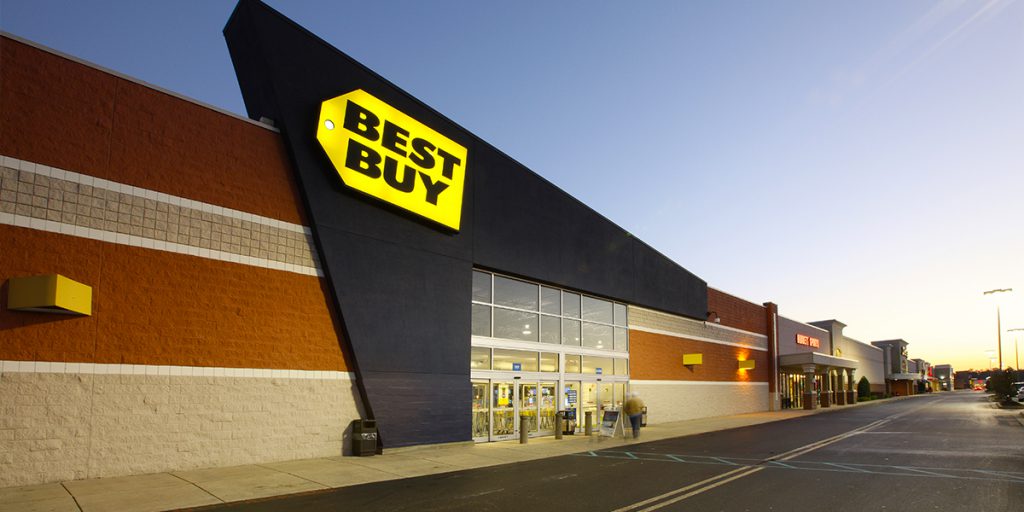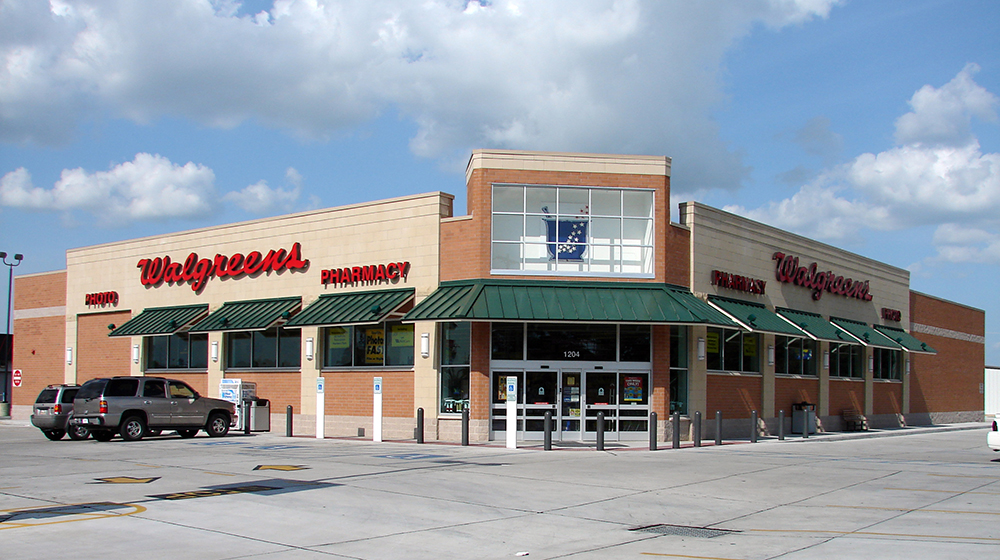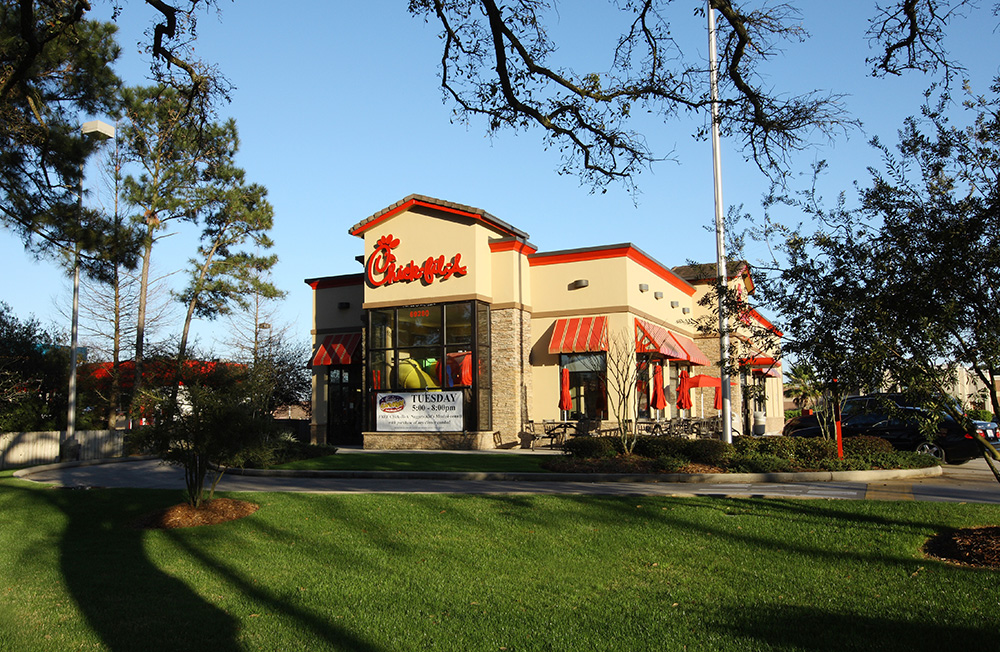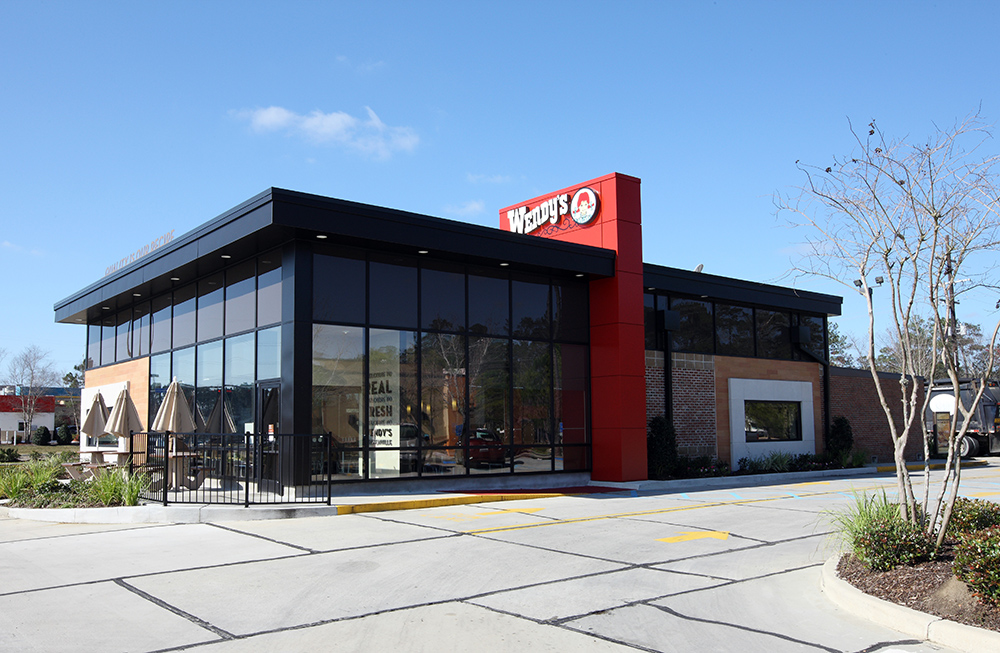What Does Triple Net (NNN) Mean?
The Popularity of NNN Deals
Single-tenant, triple net (NNN) deals have become one of the most prevalent and often traded types in commercial real estate. However, despite the popularity, triple net deal structures are still commonly misunderstood by many commercial real estate practitioners.
Triple net deals usually offer new, or nearly new real estate and are generally secured by long-term leases to national tenants. In addition to rent, an NNN tenant is responsible for operating expenses, or the “net” amount of three costs: real estate taxes, insurance and maintenance. (In other commercial property transactions, these costs would usually be the responsibly of the owner or landlord.)
NNN deals are appealing to all types of investors because they offer stable cash flows, attractive financing and unique tax benefits.
Characteristics of a Triple Net Investment
NNN investments are usually secured by long-term leases of 10 to 20 years and offer low risk with a steady monthly income stream. Typically, the long-term tenant is responsible for all maintenance and upkeep of the property with little, if any, responsibilities left to the investor. This makes NNN deals an attractive option for investors who lack time or experience to manage commercial real estate or who may be looking for a better return than is available in their specific market area.
NNN investments vary in price points from as little as $500,000 for a property leased by a small company or franchise up to $20 million for big-box retailers and similar properties. This investment type can include office buildings, malls, industrial parks or freestanding buildings.
Cap rates for NNN deals typically start at 5% for the highest-rated tenants with choice real estate and range up to 9% for tenants with lower credit ratings and non-traditional lease structures.
The Triple Net Benefits
NNN deals offer many benefits to investors, including providing a long-term solution to allow investors to meet their goals despite short-term market instability. The primary benefits that NNN deals should include are:
- Long-term lease secured by stable, credit tenant with national recognition
- Minimal management responsibilities
- Clear description of who is responsible for each expense
- All expenses should be payable by the tenant
- Scheduled rental increases over the life of the lease
- A clear understanding of any lease options
- An assessment of the underlying real estate and its residual value and usefulness at the end of the primary term
Challenges Associated with NNN Leased Properties
Just like all other investment types, there are certain risks and disadvantages that go along with NNN leased properties. They generally do not offer much of an opportunity for short-term profit, and they are less liquid than other types of investments. There is also the remote possibility that the tenant could go out of business, be acquired or merge with a competitor, leaving the building dark.
Even if the tenant has strong credit, the type of business may affect investment value. For instance, a general-purpose use—where tenant improvements are easily convertible to another tenant’s needs—is more desirable than a special use building with limited utility for future tenants. Fast food uses are one example of this issue, but certainly not the only one. Despite these possible risks, NNN investments offer a unique combination of market advantage and financial reward that makes them attractive to many investors.
If you want the best return available in your market, then you should consider this type of commercial real estate investment. Please feel free to reach out to me or one of our commercial advisors for questions or more information.
Ben Graham, CCIM can be reached at (225) 329-0268 or bgraham@stirlingprop.com.
Part #3 – Retail Site Selection for Drug Stores
Drug Stores Have Unique, Evolving Characteristics
Around the turn of the century, the Drug Store War for “Class-A” corners erupted across the Gulf South. Between the Rite Aid and K&B merger, as well as CVS and Walgreens aggressively competing for market share, the race was fast and furious. I distinctly remember sale prices exceeding $20/foot for the first time, and “Coming Soon” signs appearing on corners on the regular. Most of the drug stores that we frequent today were likely built between 1998-2006.
Unlike convenience stores that rely on traffic counts or quick-serve restaurants that benefit from both traffic counts and proximity to customers, drug stores focus more heavily on population or “warm bodies.” And, even though location and access are important, drug stores can be considered a “destination retailer.”
The reason being, although a large portion of a drug store’s customer base picks up their prescriptions during their P.M. commute, drug stores don’t rely on the impulse consumer dollar.
Extensive studies have shown (in a market size like Baton Rouge, LA) most script fillers will use the drug store located within a five-mile radius of their home.
Further, one-third of a drug store’s gross revenue is generated during off-peak hours, attributed to homemakers and retirees shopping during the day, patients picking up scripts after doctor’s visits, as well as their weekend customer base.
However, with the amount of capital that major drug stores like Walgreens, CVS and their competitors have invested in their marque locations, they in turn, usually have higher overhead and product pricing.
At a time when families have less disposable income and higher healthcare and prescription costs, more and more consumers are starting to sacrifice convenience for cheaper pharmacy alternatives.
Grocery-store pharmacies such as Walmart, Kroger and Sav-On, as well as discount prescription providers, online pharmacies, wholesalers and health clinics have seen a spike in sales, posing a threat to the retail drug store industry.
While existing population is still a key factor in the drug store site selection process, drug stores have started purchasing sites in outlying/rural areas where new home sales, multifamily communities and spikes in population are projected.
We are also seeing drugstore chains looking at more unique locations than they have in the past, capitalizing on mall shoppers, students, office building and hotel users. Some are incorporating smaller footprints with more curated product offerings or expanding in-store healthcare services to enhance their brick-and-mortar customer experience.
As consumer behavior continues to evolve, so will the characteristics and site selection needs of retailers, including drug stores.
Working with a site selection specialist that knows the market trends and projected growth patterns can be an invaluable asset for any retailer looking for sustained growth in a market.
Stay Tuned for Collier’s Next Post!
If you are interested in a site selection specialist, or for questions regarding your commercial real estate property, contact J. Collier Thornton at (225) 926-4481 or cthornton@stirlingprop.com.
Tax Reform – First Filing Season
October is the time for fall, football and pumpkin-spiced everything. (Here in the south, it’s a time for the heater in the morning and air-conditioner in the afternoon.) What else rounds out the blissfulness of fall? Tax deadlines! October is the extended filing deadline for the 2018 tax season.
The Tax Cuts and Jobs Act passed in late 2017 with many of its provisions taking place in 2018. As a refresher, below is a list of some of the major components relating to real estate business owners and investors. For a complete overview of the tax reform changes, check out my last blog here.
- Expanded Bonus Depreciation – an increase from 50% depreciation to 100% bonus depreciation of certain items with a 15-year life or less
- Qualified Business Income Deduction – 20% of the taxable income generated from a business could be eligible for a deduction pending multiple limitations
- Property Tax Deduction – remained in place for real property trade or businesses
- Interest Expense from Loans – remains deductible for entities generating less than $25 million in gross receipts and are not considered a tax shelter
- 1031 Exchanges – real estate continues to benefit from 1031 exchanges
With our first filing season behind us, we’ve seen firsthand how these reforms resulted in significant tax savings for our investors. In 2018, we completed a $6 million development that yielded over $1.8 million in year one depreciation expense. Prior to the Tax Cut and Jobs Act, only $900,000 of depreciation would have been allowed in year one, with the remaining amount spread across 5, 7 and 15 years.
For individuals, many investors benefitted from the new Form 1040: Line 9 – Qualified Business Income Deduction. This tax revision now offers some tax relief for rental real estate entities rising to the level of a trade or business. The deduction, referenced in bullet point #2 above, provides a 20% deduction from taxable income generated from your qualified trade or business investments. This new deduction has brought about substantial tax savings for individuals, sometimes resulting in the thousands of dollars. This deduction will remain in place through 12/31/2025.
Evidently, real estate investments do provide some tax and asset diversification benefits. When asked about real estate as an investment alternative, Randy Waesche, CFP, of Resource Management, said, “Many of my investors seek real estate as an alternative to stocks and bonds. It adds a level of diversification in asset class, as well as a different risk and return profile. On a risk vs. return basis, investors are seeking real estate for the 6-8% tax-deferred annual distribution that is significantly higher than a short-term municipal bond or ten-year treasury yield. Real estate has many attractive investment qualities. In the low inflation, low growth economic environment we have today, strong tax-deferred returns are attractive for investors. My clients invest tens of millions of dollars in real estate annually.”
As we have previously reported, the Tax Cut and Jobs Act has been beneficial for the real estate industry and we expect it to continue to spur opportunity in the real estate market. At Stirling Properties, we will also continue to find ways to benefit our investors and real estate assets.
Disclaimer: The information contained herein is intended for information purposes only. Individuals should seek advice directly from a qualified professional before making any decisions or taking any action that might affect your personal finances or your business. Stirling Properties is not responsible for any investment or monetary decisions made based on the information provided above and is not a tax advisor. The information provided above was done so with the perceived intent of the legislation and not based on the actual regulations. The actual regulations could yield significantly different results.
Stirling Properties Mixes Philanthropy & Fun
Inaugural Stirling Fest raises $60,000 for local nonprofits!
Aloha. Stirling Properties celebrated our inaugural Stirling Fest last Friday, a day of Hawaiian-style fun and philanthropy to raise money for charitable causes throughout the Gulf South region. The event, hosted by the Stirling Stewardship Committee, was a HUGE SUCCESS, raising over $60,000 for local nonprofit organizations!
Representing our motto of #BeTheChange: Helping others is a work of heart, every year, Stirling Properties selects charitable organizations to become the recipients of our annual company-wide fundraising efforts. Nonprofit groups are nominated and then voted on by Team Stirling members. This year, we are proud to have expanded our recipients to four worthy organizations—Special Olympics Louisiana, Camp N.O.R.A., Safe Harbor Northshore and Ronald McDonald House Charities Mobile! Representatives from each organization were in attendance to celebrate with us and receive a check for $15,000.
Celebrating our 7th year, the fundraising event was changed from an Olympics-style to more of a festival with music, games and tons of great prizes. Held at Digs Volleyball Complex in Covington, the Luau-themed day featured delicious food and beverages along with live music by in-house band Craig Marks the Spot and DJ El Camino (aka Michael Hecht of GNO, Inc.). Games and activities were held throughout the day including Beach Volleyball, Simon Says, Hula Hooping and Checkers.
The main event was a 4-team Cajun Huki Pull relay representing each of the designated nonprofits. Congratulations to Team Special Olympics, they took home the trophy for Beach Volleyball and the Huki Pull!
Mahalo. A special thanks to all of our sponsors, supporters, and Team Stirling for your generosity. Major sponsors include BXS Insurance, Berkadia Commercial Mortgage, Brasfield & Gorrie, Fishman Haygood LLP, IBERIABANK, Richard Price Contracting Co., BH Management, Hancock Whitney Bank, Capital One, Duplantis Design Group PC, Rotolo Consultants, Walker & Dunlop, Wells Fargo, Louisiana Landscape, Ogden Painting, Zito∙Russell Architects PC, Acadia Land Surveyor, Baker Donelson, Kent Design, Regal Construction, Robert Refrigeration, Stratum Engineering LLC, Armstrong Property Services, Associated Building Services LLC, Bellingrath Wealth Management, Champion Security, Cleco, Construction South Inc., Donahue Favret, E. Cornell Malone Corp., Eustis Mortgage, First Bank & Trust, First Guaranty, Gallo Mechanical, Greenleaf Lawson Architects, Jimmy Maurin, Jones Walker, Jones Swanson Huddell & Garrison LLC, Lemoine Company, Malone Roofing Services LLC, Metro Mechanical Inc., Newmark Grubb Knight Frank, PGIM Real Estate Finance, Pinnacle Elevators, Precision Metal Inc., Precision Waste Solutions LLC, Real Estate Tax Group, Resource Management LLC, Roger Ogden, SCS Electric Inc., Sun Interiors, Trimark Constructors LLC, VergesRome Architects, Vinson Guard Service Inc., WLS Lighting Solutions and Fidelity Bank.
And a big shout-out to the Stirling Stewardship Committee and the Stirling Fest Committee for all their hard work organizing the event and making it happen!
A hui hou (until we meet again)! #StirlingProud
Thank you to Big Easy Parking Lot Maintenance, Cosmich Simmons & Brown PLLC, Gulf South Electric, River Parish Disposal, Chris’ Paving, Coastal Environmental Services, Connelly Construction Group, Cost Segregation Services, Covington Electric Services Inc., Geiger Heating & Air, ITS Fire Alarm Security LLC, Jefferson Sprinkler, Larry Loyd Construction Co., Moran Construction Consultants LLC, Mullin Landscape Associates, PMAT Real Estate Investments, Premier Service Team LLC, Premium Parking, Professional Maintenance Services, Southeastern Waterproofing, Southern Farm Bureau Life Insurance Company, Upchurch Services, CMC, Moradel Cleaning Services Inc., Angelos Landscaping, B&G Lawn Maintenance LLC, Cook Moore & Associates, Dale’s Paving Inc., NcNeer Electrical Contracting Inc., Unit Design Inc., CertaPro Painters of Lafayette, Delta Flooring, Dixie Office Products, Floor Trader, Huseman & Associates LLC, Mele Printing, Pat Brister, ACA Mechanical/Industrial LLC, Susan Bonnett, T.L. Construction LLC, Grass Unlimited, Acadiana Lighting & Signs, CJ Ladner Insurance Agency Inc., Multitech Office Machines and Sign Lite.
Stirling Properties Promotes Laura Wallace to Controller – Corporate Accounting
Stirling Properties is pleased to announce that Laura Wallace has been promoted to Controller – Corporate Accounting.
In her new role, Laura will manage all of Stirling Properties’ corporate accounting functions, including, receivables, payables, cash flow and payroll.
Laura has been with the company for nearly 14 years, and previously held the role of Corporate Accountant. While she will be responsible for many of the same functions, she will also be handling new and expanded duties.
“We are thrilled to promote Laura Wallace to Controller – Corporate Accounting,” said Paul Mastio, Chief Financial Officer with Stirling Properties. “Over the years, everything that we have thrown at Laura, she has not only learned, but excelled in, and consistently gets the job done. In her previous role of Corporate Accountant, she graciously took on added responsibilities when needed, so she has essentially been performing many of these functions already.”
As Controller – Corporate Accounting, Laura will continue to handle the company’s accounting and the brokerage production in Realcore. In addition, she will be responsible for our corporate budgeting process and 401K audits. She will also supervise our accounting administrator and banking administrator.
Laura Wallace will work from Stirling Properties’ Covington, Louisiana, office. She can be reached at lwallace@stirlingprop.com or (985) 246-3777.
Retail Site Selection for Fast Food Restaurants or QSRs
Retail Trends Have Changed
While smartphones and technological advances have created the convenience for consumers to do just about anything with the simple push of a button, somehow it seems our society has never been busier. We are always on the go. Studies have shown that on average, today’s consumer spends approximately 30% more time in their vehicles than ten years ago.
Part #2: Fast Food or Quick Serve Restaurant (QSR)
The one retail sector that has seen the greatest benefit from today’s hustle-and-bustle society is the Fast Food industry (or Quick Serve Restaurant (QSR)).
As mentioned in Part #1 of this blog series, all retailers rely on traffic counts and accessibility of their location. And, like convenience stores (C-Stores), QSRs benefit greatly from traffic counts, but they must also consider proximity to their customers.
Until recently, very few QSRs focused on the A.M. or “breakfast consumer.” For years, except for a handful of fast-food chains like McDonald’s, most QSRs only focused on the lunch and dinner or P.M. consumer. Therefore, being on the P.M. side of the road was a must.
However, with retail markets becoming heavily saturated with QSRs, coupled with the increased capital tied up in a restaurant, QSRs have been forced to start offering a breakfast menu. In some cases, the small margin of revenue that breakfast sales now provide has become a crucial component in a QSR’s profitability.
The one QSR statistic that has remained a constant, however, is that the P.M. consumer is most likely to visit a QSR within 1-2 miles (5-7 minutes) from their home.
Most experts contribute this trend to two major factors: familiarity of surroundings and being able to eat a hot meal at home. So, unlike C-Stores, proximity to rooftops must be considered when choosing a QSR site. While C-Stores can rely solely on traffic counts, QSRs cannot.
With the addition of breakfast menus, more and more QSRs that once wanted to be on the P.M. side of the road will now select the best site in a desired trade area. Therefore, working with a seasoned site selection advisor can be extremely helpful in determining and identifying the ideal location to best capitalize on the surrounding market.
Stay Tuned… Part #3 – Drug Stores
If you are interested in a site selection specialist, or for questions regarding your commercial real estate property, contact J. Collier Thornton at (225) 926-4481 or cthornton@stirlingprop.com.










